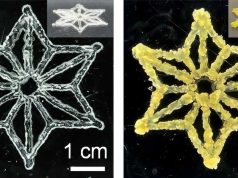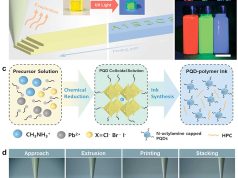Scientists from China have unveiled a novel method for 3D printing microfluidic chips. Using a modified DLP 3D printing process, microchannels can be printed with significantly higher resolution than before, according to the researchers.
Microfluidic chips are used in organ-on-a-chip systems or medical tests, among other applications. However, previous additive manufacturing processes only achieved resolutions in the range of 100 micrometers. Using adjustable exposure doses, the new approach can better control the photopolymerization of the resin, the scientists say.
This is achieved through a mathematical model that predicts the exposure, enabling printing of precise microstructures. Compared to conventional methods, smoother microchannels could be produced with higher printing accuracy. According to the researchers, the process is scalable and cost-effective.
Tests also showed that chips fabricated using the new method have higher mechanical stability. The scientists see their approach as an important step toward 3D-printed microfluidic chips for various applications.
The details of the work by Zhiming Luo et al, titled “Digital light processing 3D printing for microfluidic chips with enhanced resolution via dosing- and zoning-controlled vat photopolymerization” (DOI: 10.1038/s41378-023-00542-y), was published in Microsystems & Nanoengineering. Further details by Fei Shao et al can be found in the paper “Microfluidic Encapsulation of Single Cells by Alginate Microgels Using a Trigger-Gellified Strategy” (DOI: 10.3389/fbioe.2020.583065), which was published in Frontiers in Bioengineering and Biotechnology.
Subscribe to our Newsletter
3DPresso is a weekly newsletter that links to the most exciting global stories from the 3D printing and additive manufacturing industry.






















